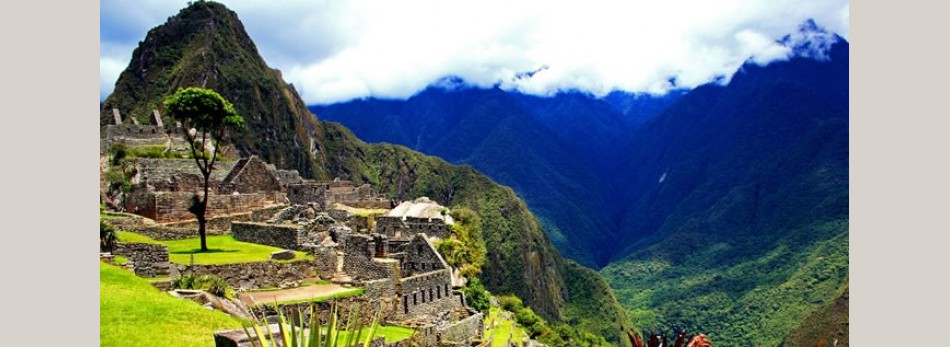Quechua

Quechuan, called Runasimi in Quechua, from runa ‘people’ + simi ‘speech,’ is a family of some 45 closely-related languages spoken in the Andean region of South America by close to 10 million people (Ethnologue).
Various theories regarding the origins of Quechua are hotly disputed. It is thought by some scholars that Quechua originated on the central coast of Peru around 2,600 BC. The Inca kings of Cuzco made Quechua their official language. With the Inca conquest of Peru in the 14th century, Quechua became Peru’s lingua franca. The Inca Empire flourished in what is today’s Peru from 1438 to 1533 AD. Although the empire lasted only about 100 years, the Incas spread Quechua to areas that today are Ecuador, Bolivia, and Chile. When the Spanish conquistadors arrived in the 16th century AD, Quechua had already spread throughout a large portion of the South American continent. The languages continued to spread into areas that were not part of the Inca empire such as Colombia, Brazil, and Argentina.
- Quechua has the status of an official language in Peru and Bolivia, along with Spanish and Aymara. In rural areas, it is used for everyday communication in informal contexts. Since most native speakers of Quechua are illiterate in their native language, it remains largely an oral language. In formal contexts, such as government, administration, commerce, education, and the media, Spanish is used. The only cultural domain where Quechua is used extensively is traditional Andean music.
- Although education In Peru is exclusively in Spanish, many primary-school teachers use a combination of Spanish and Quechua with monolingual Quechua-speaking children. Efforts to promote bilingual education in Peru have not been successful.
- In Bolivia and Ecuador, there is a movement to revitalize the language, which has resulted in the introduction of bilingual education programs in those countries, although efforts are held back by lack of written materials in Quechua in general, and teaching materials in particular.
Dialects
Ethnologue lists 45 varieties of Quechuan, divided into two groups: Central and Peripheral. They are listed as separate languages due to non-intelligibility among them. There is no concensus on what constitutes a standard.
Structure
The sound system of Quechua is relatively uncomplicated with 3 vowels and 14 consonants. The description below is based on the Cuzco variety of the language.
Vowels
Quechua has three vowel phonemes, i.e., sounds that distinguish word meaning. Since the speech of bilingual Spanish-Quechua speakers often approximates the five-vowel system of Spanish, the additional vowels are given in parentheses in the table below.
|
Front
|
Central
|
Back
|
|
|---|---|---|---|
| Close |
i
|
u
|
|
| Mid |
(e)
|
. |
(o)
|
| Open |
a
|
Consonants
Quechua has a relatively simple consonant system with only 14 consonant phonemes, i.e., sounds that make a difference in word meaning.
- There are no voiceless-voiced oppositions in native Quechua words, so neither stops nor fricatives have voiced counterparts.
- In the Cuzco variety of Quechua, each stop has three forms: plain, aspirated, and ejective. Aspirated consonants are pronounced with a puff of air that accompanies their release. Ejective consonants are pronounced with a simultaneous closure of the gloftis. There are no ejective consonants in English.
|
Bilabial
|
Alveolar
|
Postalveolar/palatal
|
Velar
|
Uvular
|
Glottal
|
||
|---|---|---|---|---|---|---|---|
|
Stops
|
plain
|
p
|
t
|
k
|
q
|
||
| aspirated | pʰ |
tʰ
|
kʰ
|
qʰ
|
|||
| ejective | p’ | t’ | k’ | q’ | |||
|
Fricatives
|
plain
|
s
|
tʃ |
h
|
|||
| aspiratedd | tʃʰ | ||||||
| ejective | tʃ’ | ||||||
|
Nasals
|
m
|
n
|
ɲ
|
||||
|
Laterals
|
l
|
ʎ
|
|||||
| Flap or trill | r | ||||||
|
Semivowels
|
w
|
j
|
- /q/ no equivalent in English
- /p’, t’, k’, q’/ are ejective consonants with no equivalents in English
- /ɲ/ = first n in canyon
- /tʃ/ʎ/ has no equivalent in English
- /j/ = y in yet
Stress
Stress in Quechua normally falls on the penultimate (next-to-last) syllable of a word.
Quechua is an agglutinating language. Words are built up from basic roots followed several suffixes each carrying one meaning.
Nouns, adjectives, and pronouns
Quechua nouns have the following distinguishing features:
- Nouns are not marked for gender. If necessary, gender distinctions are made by using specific auxiliary words.
- There are no articles.
- The plural marker –kuna is optional. It is not used if number is clear from context.
- The suffix –ta is used to mark the direct object.
- Modifiers precede nouns, e.g., hatun wasi ‘big house.’
- Possession is marked by suffixes, e.g., wasiy ‘my house,’ wasiyki ‘your house,’ wasin ‘his house.’
- Quechua distinguishes between an inclusive and exclusive first person plural. The inclusive “we” includes the interlocutor, the exclusive one does not.
Verbs
- Quechua verbs are marked for person, tense, and aspect.
- Verbs can be transitive, intransitive, linking, or existential.
- There are two past tenses. One indicates past events that are directly experienced, the other refers to events that were not directly experienced. The two tenses are marked with different suffixes.
- Quechua sentences are marked by an evidential suffix which indicates whether the speaker has personal knowledge about a statement, or has acquired the information through hearsay.
- Object pronouns are incorporated into the verb, e.g., rikuwanki ‘you see me,’ where –wa– means ‘me.’
Word order
The normal word order in Quechua is Subject-Object-Verb. The verb generally comes last in a sentence. Since objects are explicitly marked by suffixes, word order can be relatively free. The suffix –qa- marks the topic of the sentence, i.e., it indicates that the word represents old or known information, e.g., Alqoqa qarita kachuran ‘The dog, it bit a man,’ Alqo qaritaqa kachuran ‘The man, he was bitten by a dog.’
It is estimated that up to one-third of Quechua vocabulary was borrowed from Spanish. The number of loan-words is so large that Spanish sounds such as /f/, /b/, /d/, /g/ that were absent in Quechua are now becoming part of its sound system. Some examples of loanwords: sirbisa from Spanish cerveza ‘beer,’ chufir from Spanish chofer ‘driver.’
Below are a few common words and phrases in Quechua.
| Hello | Napaykullayki |
| Please | Allichu |
| Thank you | Sulpaiki |
| Excuse me (from Spanish dispensa) | Dispinsayuway |
| Yes | Aríi |
| No | Mana |
| Man | Qari, ghari |
| Woman | Warmi |
Below are the numerals 1-10 in Cuzco Quechua.
|
1
|
2
|
3
|
4
|
5
|
6
|
7
|
8
|
9
|
10
|
|---|---|---|---|---|---|---|---|---|---|
|
hoq
|
iskay
|
kinsa
|
tawa
|
pisqa
|
soqta
|
qanchis
|
pusaq
|
isqon
|
chunka
|
Writing
Before the arrival of the Spaniards and the introduction of the Latin alphabet, the Incas lacked a written language.The only Incan examples of recorded information are knotted strings known as khipu (or quipu in Spanish orthography). In the view of some scholars, most khipu were arranged as knotted strings hanging from horizontal cords to represent numbers for bookkeeping and census purposes.
Quechua has been written using the Roman alphabet since the Spanish conquest of Peru. It first appeared in print in 1560 in a dictionary by Domingo de Santo Tomas and in some religious texts. Until the 20th century, Quechua was written with a Spanish-based orthography. In 1975, the Peruvian government adopted a new orthography for Quechua which replaced the Spanish-based representations of certain sounds with letters that more accurately reflect their pronunciation in Quechua. Today, there are proponents and opponents of the two orthographies. Opponents maintain that the new orthography makes Quechua writing harder to learn for people familiar with Spanish. Proponents, on the other hand, suggest that the new system better matches the phonology of Quechua.
Take a look at Article 1 of the Universal Declaration of Human Rights in Cuzco Quechua.
|
JUQ ÑIQEN (1) Llapa runan kay pachapi paqarin qispisqa, “libre” flisqa, allin kausaypi, chaninchasqa kausaypi kananpaq, yuyayniyoq, yachayniyoq runa kasqanman jina. Llapa runamasinwantaqmi wauqentin jina munanakunan. |
These words came into English from Quechua via Spanish
| coca | cuca, the native name of the plant |
| condor | cuntur, the native name for the bird |
| guano | huanu ‘dung’ |
| jerky | ch’arki ‘dried flesh’ |
| llama | llama, the native name of the animal (with Spanish spelling) |
| lima | associated with Lima, Peru, from where the plant was introduced to Europe circa 1500. The city name is corrupted from Quechua Rimac, name of an Inca god. |
| pampa | pampa ‘plain’ |
| puma | puma, native name of the animal |
| quinine | kina ‘Cinchona bark’ (from which it is extracted). Cinchona is a tropical evergreen believed to have originated on the slopes of the Andes in South America. |
| vicuña | wikuna, the native name of the animal |
Quechua in the movies
The fictional Huttese language in the Star Wars movies is largely based on Quechua.







